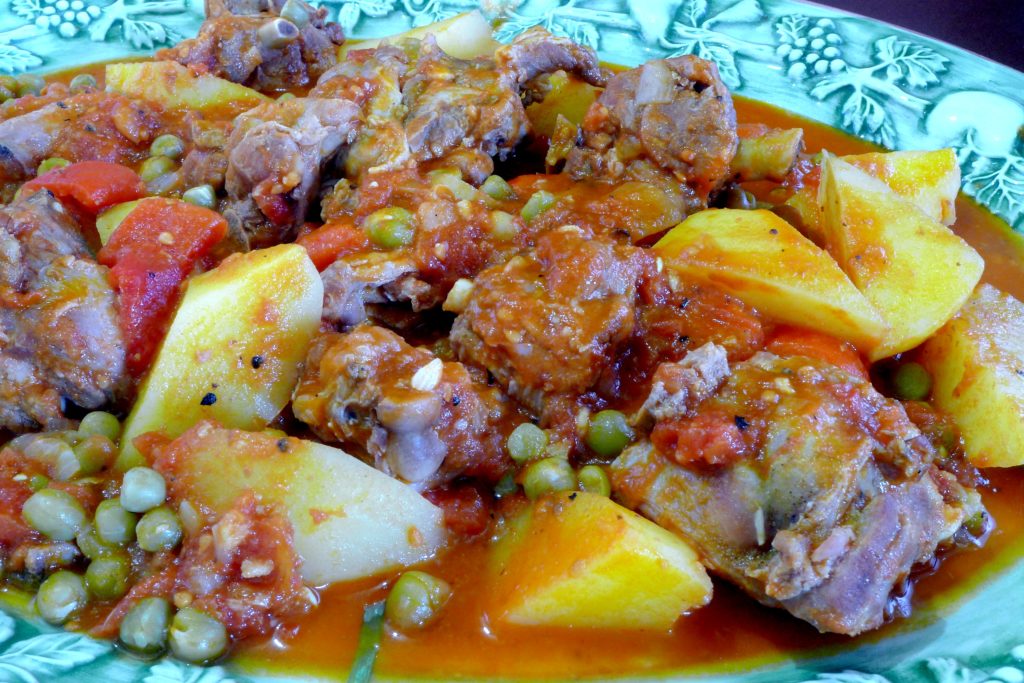
Kalderetang Kanding
A TRIP to the mountains in Argao inspired me to write this article. As we traversed the mountain barangays, we passed by forests, valleys and streams. The verdant mountains were lush with trees, farms dotted the hills, and water was available. There were also rice terraces.
The high altitude causes the temperature to be colder here, perfect for growing vegetables. The trees ensure that the streams never dry up and water flows into lowland farms. There were fields planted with vegetables and corn. A pleasant sight were hillsides teeming with ferns or pakô. I was tempted to go down and forage for fiddleheads—furled fronds of young ferns, called such because they are shaped like a scroll or the curved ornamentation at the end of stringed instruments, such as a violin.
Ferns and other wild plants are fodder for carabaos, cows and goats that are pastured here and there. The animals looked healthy. The goats especially looked like a happy bunch as they jumped and bleated. I never considered goats as a pet. When I see one, I imagine it cooked into Kaldereta (or Caldereta).
The term Caldereta must have come from “caldero” or a big metal pot. Just like the Cebuano dish Pochero and the Spanish word “puchero,” which means “stewpot.” In Luzon, the Kaldereta is also made with beef. Cebuanos, however, do not like beef that much. Cows are not native to Cebu or the Philippines. It is an introduced specie, brought by the Spaniards. Centuries after,
Cebuanos still prefer pork and goat’s meat over beef.
A dish of Kalderetang Kanding is judged not just by tenderness of the meat, but mainly for the absence of a distinctive smell (“langsi”) and taste common to gamy meat, like a goat’s. I talked to seasoned Kaldereta makers about this. They say that the raw meat should be properly cleaned.
After washing it with water, it is important to remove all membranes that cover the meat. This is called lamog-lamog in Cebuano.
The ingredients of Kalderetang Kanding has evolved through the years. In “Lagda sa Pagpanluto,” the 1924 cookbook of Doña Maria Rallos, Kaldereta had only bell peppers, green peas, tomatoes, garlic, onions and a smattering of Chinese spice. Today the dish has potatoes, carrots and even pineapple tidbits.
Kalderetang Kanding Ingredients
1 kilo goat’s meat
12 tbsps oil
3 tbsps vinegar
1 can crushed tomatoes
1 big bell pepper
1 can green peas
8 cloves garlic
1 big onion, or 2 small ones
3 medium-sized potatoes
* Cut goat’s meat into 4-inch pieces. Clean very well by removing all the membranes surrounding the meat. If there are big bones, remove the marrow.
* Peel and chop the garlic.
* Peel and quarter the onions.
* Remove the seeds from the bell pepper and cut into 2-inch pieces
* Peel and cut the potatoes into quarters.
* Drain the canned peas.
* Open the canned tomatoes and set aside.
* In a big pot, pour in the oil and fry the goat meat until brown. Add the garlic and onion and stir fry for 2 minutes. Add the tomatoes and bell pepper. Pour enough water to cover the ingredients. Cook until the meat is tender and add the potatoes. Simmer until the potatoes are cooked. Stir in the green peas.
* Salt and pepper to taste.